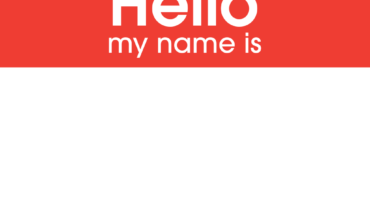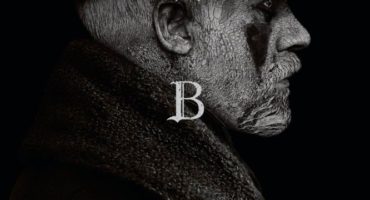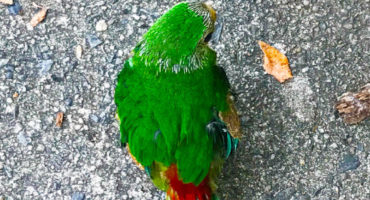Where Do Trust and Connectedness Overlap?
Last week, we talked about Trust in the Media (as well as trust generally). This week we have been talking about connectedness. Is there a relationship between the two?
Karen Stephenson, a social-network business consultant and friend of the Media Center (I first met Karen at a Media Center sponsored Symposium last year) would argue there is. She is profiled in the most recent issue of Business 2.0. Here is an excerpt from that article:
There is a secret structure at every organization that spells its success or failure. You can’t see it in the org chart or in the flow of money on the spreadsheet. But within this structure, the assistant in the third cubicle from the elevator may be more crucial than the suit in the fancy corner office.
That’s because the web of alliances is woven not by the vice presidents or generals but by people Stephenson has dubbed “hubs,” “gatekeepers,” and “pulse takers.” The links they create combine to form the network of human trust in your company, and that controls the flow of ideas, which is the lifeblood of any business.
“You may think you know your organization from the org chart, but the fact is, things work much differently,” Stephenson tells her audience emphatically. (She says almost everything emphatically.) “You have to discover the world of connections buried underneath the traditional hierarchy.” What she means is that knowing who trusts whom is as important as knowing who reports to whom.
Woe to the person who doesn’t understand the trust network in his or her company, she tells the generals, whose attention is now becoming more focused. Ignore this hidden structure and your quality team players will jump ship, mentors will abandon their charges, institutional memory will vanish, and glad-handing schmucks will weasel their way into power. But if you fathom how your company really works, you can identify and reward your most valuable employees and unearth innovative ideas.
Ok, I think I get it. Trust is the direct result of being connected. And being connected becomes even more possible, or more valuable, when there is trust. Without it, the whole system will fall apart. More from the article:
As Stephenson sees it, organizations’ structures fall on a continuum between rigid hierarchies and bloblike networks. Government bureaucracies are often the worst examples of hierarchies. But there’s a different danger in networks: If no one knows who’s in charge of what project and everyone thinks he has real input into every decision, the company can become directionless. So, too, can academic bureaucracies, which Stephenson believes contain some of the most amorphous, paralyzing networks.
“The trick is to balance the hierarchy–the clear line of command–with the more tribal trust relationships that exist within a healthy network,” Stephenson says. “Hierarchies can neutralize networks, and networks can unhinge hierarchies. In the end, one does not work well without the other.”
I am still wrapping my head around this stuff, so I’m not sure I have much to add to the conversation at this point. What do you think? And, Karen — if you are out there, please weigh in.
TAG: wemedia
Previous Comments
A secret? What kind of a secret is that, if one is talking about it worldwideweb?
Which reminds me of that riddle going about at school when I was a kid: Do you see that elephant behind that sprig out of the window ?
No? It’s well hidden, huh?
Anyway, I was just wondering: can connectedness ensure facts are plain enough to be seen?
According to the article, that hidden structure would go unnoticed to most people (as does by the way the eye’s big blindspot, constantly recomputed by the brain without one ever noticing: one can’t even trust what one sees).
But well, as it’s the same for everyone, suppose now one does see it, whatever that ‘secret structure’ may be: does it automatically inspire more trust? What if actually one doesn’t like the new picture?
Funny what synchronicity does sometimes, I was just (re)watching Minority Report: this film based on Philip K. Dick’s story actually portrays a society wired and connected to the extreme, at all levels. And there, one sound elderly woman not only asserts women know better (poor us, we men), but goes on saying something like “trust no one but yourself, because that is the rule of life”. Or, at the other end of the social spectrum, to paraphase dear ol’ Churchill: “there are no international interests, only changing national interests”. As dwindling trust in Congress was mentionned earlier in this blog, the Romans obviously shared the opinion way back then with their say “Senatus bestia, senatores boni viri”: The Senate is a beast, senators are good men.
Is it the same with individuals, as public entities are a sum of people? So who should one trust? The people, or everyone one by one? As people have lived together ever since the dawn of humanity, how do we know trust is as old as the human race? And now what of the people wired and connected internationally? Which triggers umpteen questions: “what is trust?” in the first place ?
I don’t mean to split hairs, but for the sake of clarity and from a methodological point of view, just what definition are we using? Come to think of it, do we have one?
Or have its terms been specified?
Trusting we are talking about the same concept doesn’t mean we are.
Huh, and what if we were just dwelling on mere drivelling? Or is trust just a matter of dialectics? In which case, chances are there is no end to it, even by war of attrition. Gee, so many questions…
Anybody a clue?
Brian is Managing Director of little m media which provides strategic guidance and support to organizations around the use of the internet and technology to facilitate communications, engagement, education, and mobilization.




Trust dominates informal networks within a hierarchy. This is often taught in MBA classes, but amazingly once out in the executive suite, many professionals seem to forget all about it and focus purely on hierarchies. Interestingly, digital connectedness has managed to thrive without an explicit hierarchy and in fact has proved very resistant in acquiring one. Or are today’s A list bloggers going to be tomorrow’s big cheeses on the digital landscape?